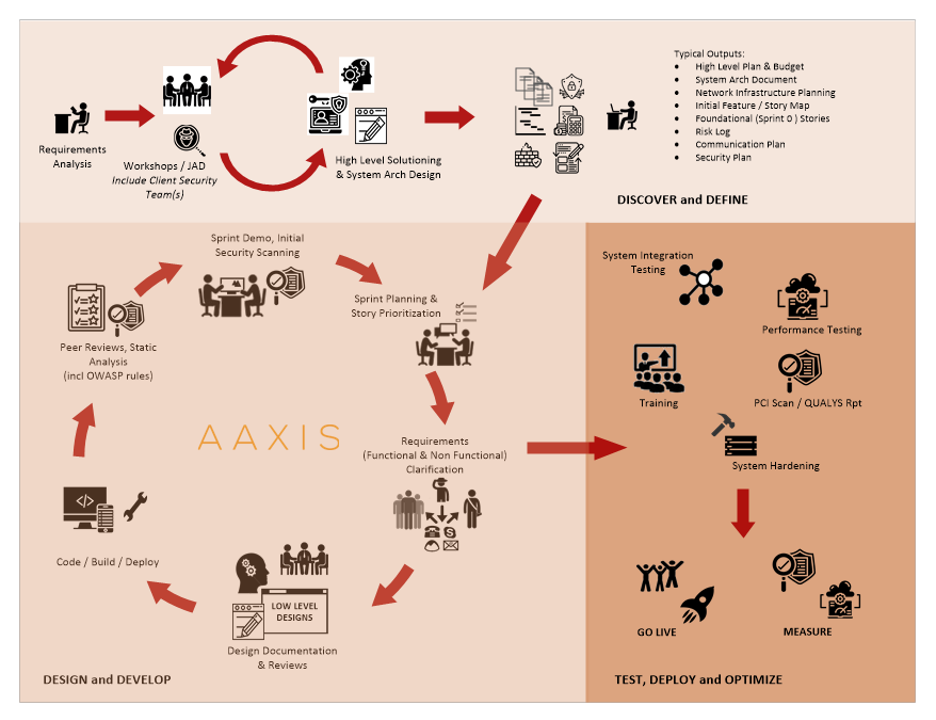10 Tips for Choosing the Right eCommerce Partner for Your Business
Evaluating and selecting a Systems Integrator (SI) for your digital commerce project can be a daunting task. You want to choose an SI that has the...
5 min read
 Sara Nigbor
:
Nov 10, 2023 3:12:44 PM
Sara Nigbor
:
Nov 10, 2023 3:12:44 PM
In the ever-evolving landscape of digital commerce, the successful delivery of programs is contingent upon a myriad of factors that extend beyond mere technical prowess. As both B2B and B2C businesses increasingly pivot towards online platforms to engage with their customers, the intricacies of digital commerce programs demand careful consideration and strategic planning. Based on our company's 20+ years of experience delivering successful commerce implementations for large companies, we break down the top 10 critical factors that can make these initiatives work well. It's not just about tech skills; it's about smart planning that meets the specific needs of businesses and customers alike. From having a strong team and executive support to focusing on security and performance, we'll explore the essential factors that can make digital commerce programs a success in the world of B2B and B2C.
The most successful projects have always been those where the Core Team are all working towards the same goal. This core team may include internal resources and consultants in key roles:
Working towards the same goals can be tough when you have competing priorities. A Product Owner will always want to push for more functionality quicker but that can be at odds with timeframes of the QA team or system development activities and enterprise initiatives. The Core Team inevitably undergoes some level of forming–storming–norming–performing (Tuckman, 1965). Employing strong leadership strategies can help get the team to the performing level quicker. The sooner that happens, the better.
There will likely be critical decisions at various points in the project that, if delayed, could have a significant impact on the budget and timeline. The Core Team needs to be able to escalate and get to a decision as quickly as possible. The problem statement and options should be presented in a succinct manner so that the Executive sponsor(s) have the information they need to make the decision quickly. Not everyone may agree with every decision that is made but the team needs to agree to disagree and move on.
Check-ins on a weekly basis with the Core Team to discuss status, budget, plan and risks is crucial for success. These check-ins need to break down the barriers that impede progress or have the potential to become a project roadblock. Transparency is key. As a consultant, I am always upfront with my client. We’re in it together as one team (see point #1!). If there is an issue with resources or timeline, I’ll surface that and provide a plan that gets us back on track or ask for help from the Core Team as a whole in terms of priorities. No one throws anyone under the proverbial bus–just get the job done and escalate/resolve issues early before they become a roadblock.
During the start-up phase of the program, standards need to be set in place that will hold for the rest of the project. This includes the typical list of Project Management Standards:
A starting high-level architecture gains clarity and should be documented in whatever format makes sense. I like to see a high-level context diagram that shows the main users of the system and how they interact, an application component diagram that also declares any integration needs, and a physical architecture diagram that addresses any security constraints This foundational documentation set can then be given to anyone who joins the project to give them a baseline understanding of where the project is headed. Ideally, any consulting company that you may choose to work with will have a standard set of foundational documentation and templates that can be reused. Re-inventing the wheel each time is just not fun. Of course, Client requirements may dictate slight changes or require certain toolsets which are reasonable adjustments.
Part of the foundational documentation should be around the development methodology that the team will use and what tools will support that methodology. At AAXIS, we sometimes utilize a Hybrid Agile approach that looks something like the following and can work regardless of technology:

In today’s world, performance and security are paramount. Both topics need to be incorporated into the development methodology, training, and architecture from the onset of the program. It's crucial to meet with client security teams to determine any specific requirements. System Integrators should have clear and documented security policies and should have performance planning and testing incorporated early on in development.
Agile can sometimes be used as an excuse to not define everything up front. And that is partially true–Agile needs to allow for flexibility and continuous collaboration. However, some key requirements do need to be well understood up front. This is especially true when working with an offshore development team. A high-level Story Map is always a good idea to help ground the team and provide overall context for large programs. User Stories need to be consistent and clear and planning needs to allow for review and clarifications as necessary.
It is important to have a backlog of User Stories, ready or close to ready for development, that can continuously be groomed. Once the development team gets to the performing stage of maturity, they can be very efficient and can start to work ahead a bit. Today’s tools and continuous development easily allows for multiple concurrent branches of work.
Project requirements must be traceable from the point of inception to final deployment. There are many good toolsets that support this type of traceability, e.g., Atlassian has a solid suite of tools, as does Microsoft. What is important is that the product requirement or feature gets tied to a series of User Stories. Each User Story can have linkages to code check-ins and peer reviews, test cases, performance results and security scans. In this way, the application becomes somewhat self-documenting. If you can tie a new requirement to a parent User Story – you can see the evolution of that functionality. You also remove the dependence on tribal knowledge which often plagues legacy systems.
Measurement is key to continuous improvement. For each measure, at least one mechanism must be defined. Here are a few examples:
In conclusion, the journey of successful digital commerce implementation, whether in the realm of B2B or B2C, is a nuanced one, shaped by a combination of factors that go beyond technical expertise. Drawing on over two decades of experience in delivering commerce solutions for large enterprises, we've distilled the essential elements into a top 10 list. From fostering a unified team and securing executive support to prioritizing security, performance, and continuous improvement, these factors serve as a roadmap for navigating the intricacies of digital commerce initiatives.
It's crucial to recognize that each project will present its unique set of challenges. However, armed with insights from our comprehensive list, we hope you now have a solid foundation to tackle the complexities of launching your own digital commerce initiative. Whether you're stepping into the world of online transactions or making a change for a better system, these considerations will guide you in making informed decisions and achieving success in this ever-evolving landscape.
------------
This article was edited and updated from an earlier version by our Chief Science Officer, Naresh Ram. Also, thanks to Gerry Palaganas for providing valuable feedback.

Evaluating and selecting a Systems Integrator (SI) for your digital commerce project can be a daunting task. You want to choose an SI that has the...

For many IT leaders, the transition to digital commerce in the cloud is a mandate for survival. After all, the cloud’s advantages are many: increased...

Traditional monolithic software was once the backbone of tech but has grown very rigid in the face of today's rapid pace of change. Even if your...